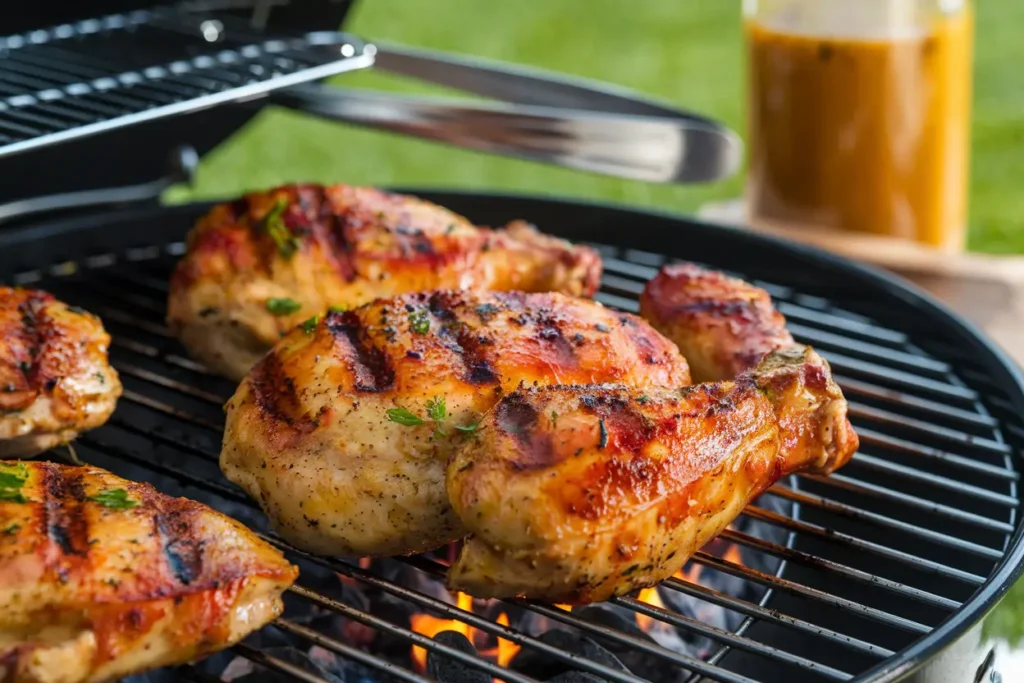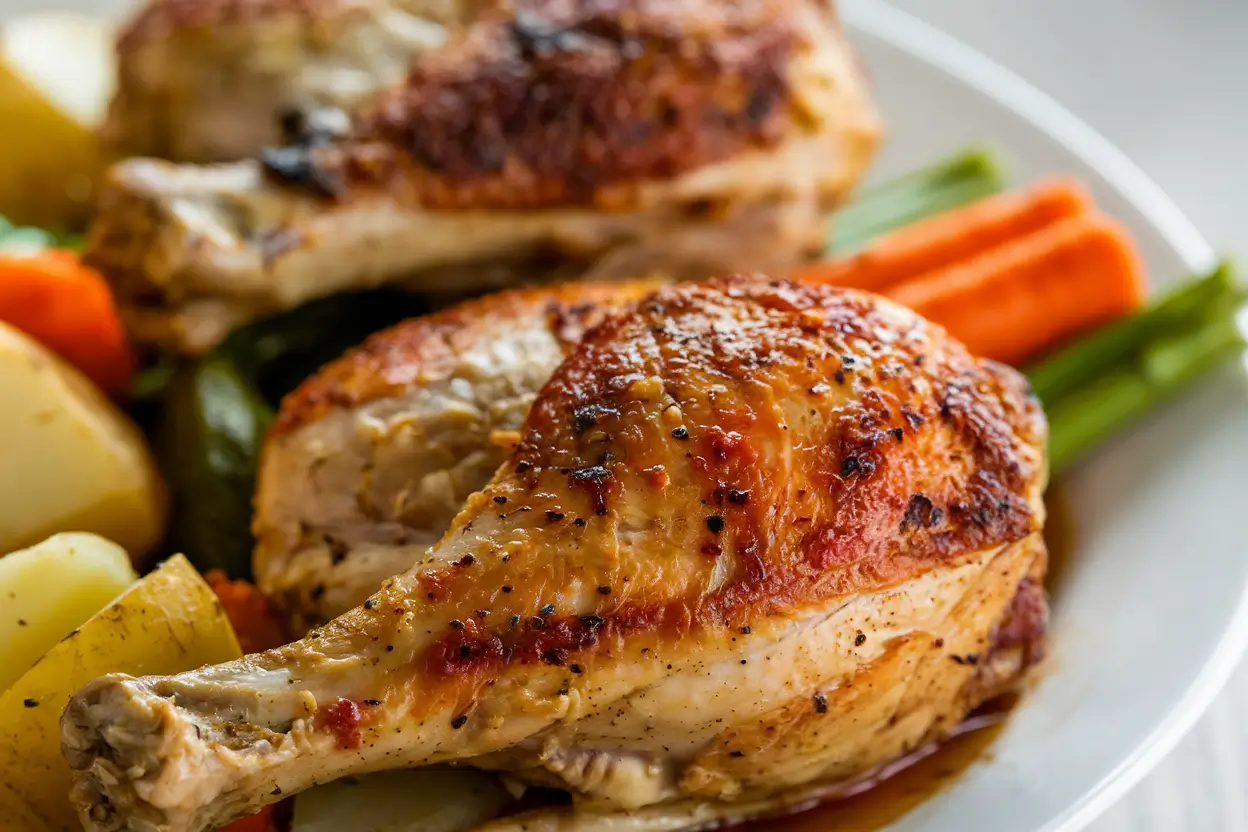Introduction to Chicken as a Versatile Protein
Chicken isn’t just food; it’s a superstar in the culinary world. From hearty soups to crispy fried delights, this protein fits almost every recipe and every mood. But when we talk about a pound of chicken, what comes to mind? For most of us, it’s convenience. A pound is just the right amount to whip up a meal for a small family or prep a batch of meals for yourself. Let’s dig into why it’s such a favorite.
Why a Pound of Chicken is a Popular Choice for Meals
Why do we always seem to grab a pound? It’s like the Goldilocks of measurements—not too little, not too much, but just right. Whether you’re feeding four or saving leftovers for lunch tomorrow, a pound works wonders. It’s also easy to handle—you’re not stuck breaking down a whole bird, but you’re getting enough to make the effort worth it.
“A pound of chicken is the sweet spot for meal planning: manageable, versatile, and cost-effective.”
And let’s be real—we’re all looking for something that’s quick to cook and doesn’t break the bank.
Understanding Chicken Cuts and Their Weights
Before you toss that chicken in your cart, it’s helpful to know what you’re buying. Not all chicken is created equal—different cuts offer different flavors, textures, and cooking times. So, how do these cuts stack up when it comes to weight?
How Many Pieces Make a Pound of Chicken?
It depends! If you’re talking chicken breasts, a pound usually means about two medium-sized pieces. For drumsticks, you might get three to four. Wings? Probably six or more. Thighs? Two to three, depending on their size. Knowing this can help you estimate portions and prep time.
Different Chicken Cuts: Breast, Thighs, Wings, and Drumsticks
Here’s a quick breakdown:
| Cut | Quantity in 1 Pound | Best Cooking Methods |
|---|---|---|
| Chicken Breast | 2 pieces | Grilling, baking, sautéing |
| Thighs | 2-3 pieces | Slow cooking, frying |
| Wings | 6-8 pieces | Frying, baking, grilling |
| Drumsticks | 3-4 pieces | Roasting, grilling |
Breasts are lean and mild, perfect for quick recipes. Thighs are juicier and more forgiving if you’re prone to overcooking. Wings? Perfect for parties. Drumsticks? Kid-friendly and oh-so-satisfying.
Nutritional Value of a Pound of Chicken
Chicken is a powerhouse of nutrition, especially when you’re looking for a high-protein, low-fat option. But what does a pound pack in terms of nutrients? Let’s dive in.
Calories, Protein, and Fat Content in Different Cuts
Here’s a quick table to make things clearer:
| Nutrient | Chicken Breast (1 lb) | Thighs (1 lb) | Wings (1 lb) | Drumsticks (1 lb) |
|---|---|---|---|---|
| Calories | 499 | 660 | 940 | 700 |
| Protein (g) | 93 | 77 | 64 | 82 |
| Fat (g) | 5 | 44 | 64 | 46 |
“Chicken breast wins in the lean-and-clean category, but thighs and drumsticks bring the flavor.”
Choosing the right cut depends on your health goals and flavor preferences. Want lean? Go for the breast. Craving something rich? Thighs have your back.
Comparing Chicken to Other Proteins
How does chicken stack up against beef or fish? Chicken offers a great balance of protein and calories without the high saturated fat found in some red meats. It’s also more affordable than most fish, making it a go-to for budget-conscious eaters.
How to Buy a Pound of Chicken
Not all chicken is created equal—shopping smart makes a big difference in flavor and safety. Here’s how to pick the best bird for your buck.
Fresh vs. Frozen Chicken: What to Choose
Fresh chicken is great if you plan to cook it within a couple of days. But frozen? It’s a lifesaver for meal planners. Just make sure to check the packaging date and avoid freezer-burned packs.
Tips for Selecting Quality Chicken at the Store
- Look for pink, not grayish meat.
- Check for a clean smell. Any funky odor? Walk away.
- Go for airtight packaging.
When in doubt, choose organic or free-range options. They’re a bit pricier but often worth it for flavor and ethical reasons.
Preparing a Pound of Chicken for Cooking
Prepping chicken isn’t rocket science, but a few steps can make a world of difference.
Proper Cleaning and Marination Techniques
Always rinse chicken under cold water and pat it dry. Marination is the magic wand for flavor and tenderness. Use ingredients like:
- Lemon juice or vinegar for a tangy kick.
- Yogurt for creamy tenderness.
- Garlic, ginger, or herbs to pack in flavor.
Let it sit for at least 30 minutes, but overnight is even better.
Essential Tools for Cooking Chicken Perfectly
- A sharp knife for clean cuts.
- A meat thermometer to avoid guesswork.
- A sturdy pan for searing.
Invest in these, and you’re halfway to chef-level chicken.
Cooking Techniques for a Pound of Chicken

Now that you’ve got your chicken ready, how do you cook it? The options are endless, but let’s stick to the classics that always deliver.
Baking, Grilling, Frying, and Slow Cooking Explained
- Baking: Preheat your oven to 375°F (190°C). A pound of chicken usually takes about 20-25 minutes, depending on the cut. Brush with olive oil and season with herbs for a crispy, flavorful result.
- Grilling: Fire up the grill and cook chicken for 6-8 minutes per side. Use a meat thermometer to ensure the internal temperature hits 165°F (74°C).
- Frying: For crispy, golden perfection, fry chicken in hot oil (350°F or 175°C) for 8-10 minutes. Wings and drumsticks shine in this method.
- Slow Cooking: Toss chicken into a slow cooker with your favorite spices and some broth. Let it cook on low for 6-8 hours. The result? Fall-apart tender meat.
Cooking Times for Different Chicken Cuts
Here’s a handy chart:
| Cut | Cooking Method | Average Time |
|---|---|---|
| Breast | Baking | 20-25 minutes |
| Thighs | Slow Cooking | 6-8 hours (low) |
| Wings | Frying | 8-10 minutes |
| Drumsticks | Grilling | 25-30 minutes |
“Always cook chicken until the internal temperature reaches 165°F (74°C) to ensure it’s safe to eat.”
Delicious Recipes Using a Pound of Chicken
Ready to impress your taste buds? These recipes are easy, quick, and absolutely delicious.
Quick Weeknight Dinner Ideas
- Garlic Butter Chicken: Sauté chicken breast in a garlic butter sauce with herbs. Serve with steamed veggies or rice.
- Chicken Stir-Fry: Toss chicken with soy sauce, ginger, garlic, and mixed veggies for a healthy, speedy dinner.
Meal Prep Recipes for Busy Days
- Grilled Chicken Salad: Pair grilled chicken with leafy greens, cherry tomatoes, and a tangy vinaigrette.
- Chicken Tacos: Shred slow-cooked chicken and serve in tortillas with your favorite toppings.
The possibilities are endless when you’ve got a pound of chicken in your kitchen!
Common Problems When Cooking Chicken
Even the best cooks face challenges with chicken. Here’s how to tackle the most common ones and ensure your meals turn out perfectly every time.
Why Does Chicken Sometimes Turn Out Dry?
Dry chicken is a major letdown, isn’t it? The culprit is often overcooking. Chicken is lean, so it doesn’t have a lot of fat to keep it moist if left on the heat too long.
Solutions:
- Use a meat thermometer to check for doneness.
- Marinate your chicken to lock in moisture.
- Avoid cooking on high heat for extended periods.
Tips to Avoid Undercooking or Overcooking Chicken
Undercooked chicken? That’s a health hazard. Overcooked? You’ve got a chewy mess. Here’s the sweet spot:
- Know your cuts: Breasts cook faster than thighs. Plan accordingly.
- Use even heat: Don’t crank up the flame—low and slow often works better.
- Check the internal temperature: Invest in a meat thermometer. It’s worth it.
“Cooking chicken is all about balance—the right heat, time, and preparation make all the difference.”
Storage and Leftovers: Making the Most of a Pound of Chicken
Have leftovers? Don’t let them go to waste! Proper storage keeps your chicken fresh and tasty for the next meal.
Safe Storage Practices for Raw and Cooked Chicken
- Raw chicken: Keep it in the fridge for up to two days or freeze it for up to six months.
- Cooked chicken: Store in an airtight container in the fridge for up to four days or freeze for up to three months.
Creative Ways to Use Leftover Chicken
- Chicken Soup: Add your leftovers to a pot of broth with veggies for a comforting meal.
- Chicken Quesadillas: Stuff shredded chicken into tortillas with cheese and salsa for a quick snack.
- Chicken Fried Rice: Mix with day-old rice, soy sauce, and veggies for a filling dish.
Bonus Tip:
Label your leftovers with the date. Trust us, it’ll save you from any mystery-meat situations later.
The Cost of a Pound of Chicken Around the World
Chicken prices vary widely depending on where you live, how the chicken is raised, and whether it’s fresh or frozen. Let’s explore some factors that affect costs and ways to save.
Factors Affecting Chicken Prices
- Location: In regions with large poultry industries, chicken tends to be cheaper. In remote areas, it’s often pricier.
- Organic vs. Conventional: Organic chicken usually costs more due to higher farming standards.
- Seasonal Demand: Prices may spike during holidays or barbecue season.
Budget-Friendly Ways to Buy Chicken in Bulk
- Look for sales: Stock up when your local store offers discounts.
- Buy whole chickens: They’re often cheaper per pound, and you can use every part.
- Shop at wholesale stores: Places like Costco often offer better deals on bulk packs.
“A little planning goes a long way in saving money while still enjoying quality chicken.”
Chicken Safety and Hygiene Tips
Handling chicken properly isn’t just about flavor; it’s about keeping your family safe from foodborne illnesses.
Preventing Cross-Contamination in the Kitchen
- Use separate cutting boards for chicken and other foods.
- Wash your hands thoroughly after handling raw chicken.
- Clean knives and surfaces with hot, soapy water immediately after use.
Understanding Expiry Dates and Safe Consumption
- Sell-by Date: Indicates how long the store can display the product.
- Use-by Date: The last day the chicken is at its peak quality.
When in doubt, trust your senses. If it smells off or looks slimy, it’s best to toss it. Safety first!
Frequently Asked Questions About a Pound of Chicken
How much is 1 pound of chicken?
A pound of chicken equals 16 ounces, and the actual amount depends on the cut. For example, 1 pound of chicken breast is typically about two medium-sized breasts, while a pound of wings could be around 6-8 pieces, and a pound of drumsticks is usually 3-4 pieces. The weight includes the meat, bones (if applicable), and any skin.
How many breasts is 1lb of chicken?
One pound of chicken breast usually equals 2 medium-sized breasts. However, the exact number can vary depending on the size of the breasts. Larger chicken breasts may weigh closer to 8 ounces each, meaning you’d get around 1.5 per pound.
How many does 1lb of chicken feed?
A pound of chicken typically feeds about 2-3 people, depending on the recipe and serving size. For example:
- Boneless breasts can serve 2-3 people if used in dishes like stir-fry or salads.
- Bone-in chicken may yield slightly less meat, so it might feed only 2 people.
If serving chicken as the main protein, aim for 4-6 ounces per person.
Is it better to bake chicken at 350 or 400?
It depends on your goal:
- Bake at 350°F (175°C) if you want a more tender, juicier chicken. This lower temperature allows for more even cooking, especially for bone-in pieces or larger cuts.
- Bake at 400°F (200°C) for crispier, golden skin and a shorter cooking time. This is ideal for boneless cuts like breasts or thighs.
Tip: Always use a meat thermometer to ensure the internal temperature reaches 165°F (74°C) for safe consumption..
Conclusion: Making the Most of a Pound of Chicken
Chicken is the MVP of the kitchen—affordable, versatile, and delicious. Whether you’re grilling, baking, frying, or slow cooking, a pound of chicken can transform into countless dishes. Armed with these tips, tricks, and recipes, you’re ready to tackle any chicken challenge like a pro.
So, what are you waiting for? Grab a pound of chicken and get cooking!

